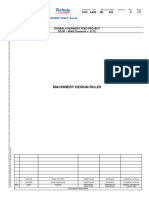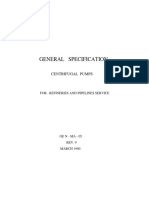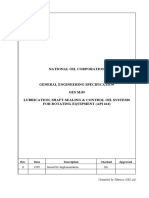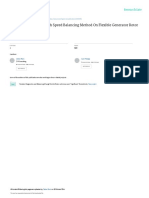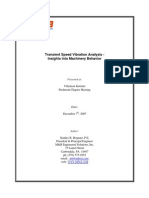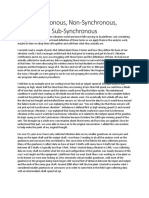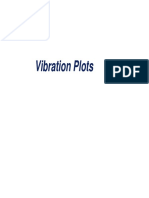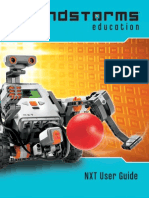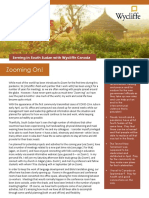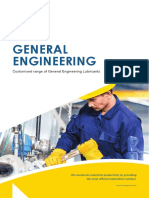Rev.
A, #3 Year 2024 1
A short note on the API standards for rotating machinery
API (American Petroleum Institute) was established in 1919, and has published more than 700
standards. They went on to become the default standards for refining, oil & gas production,
petrochemical and the hydrocarbon processing industry.
Most of the Oil & Gas production industry, because of the large size of its machinery, high power
density, space constraints, remoteness, and many times lack of available utilities also follow the
design concept of “Fit for Purpose”.
For example, large mechanical seals installed on the main oil pumps, at most oil production
facilities, generally falls under the category which API 682 calls as “engineered seals”. In the oil &
gas production industry, the main oil pump size may be between 500 to 5,000.00 kW. Such large
pumps require engineered seals. Often, they have high circumferential speeds (>150 m/s) and
other operating conditions which fall outside the design envelope of API 682.
Lack of space in the offshore Oil & Gas facilities also drove the concept of “Fit for Purpose”.
Example, the lube oil tank is included in the machinery base plate of many compressors.
It should be noted that the API standards are not design codes or manufacturing standards.
These standards are primarily written to help define the contracted scope of supply, and do
not / may not cover every relevant aspect of the equipment design.
The responsibility of the safe and reliable design of the machinery lies with the plant owner or
their sub-service provider; process licensor, EPC (Engineering, Procurement & Construction)
contractor and the machinery supplier. The licensor / EPC contractor may be entrusted with the
responsibility of the process design, correct specification of the expected operating conditions,
site conditions and the available utilities; whereas, the equipment supplier is expected to tailor
their equipment design, and its auxiliaries to meet the performance requirements.
A safe plant / equipment design and operation is a joint effort between the purchaser and it’s the
suppliers, but the final responsibility lies with the operator who obtains the license to operate the
plant from the local regulator. Therefore, the job specifications written by the plant design
engineers, their design experience and the knowledge remains’ very important for developing any
new plant design. Operators should familiarize themselves with the limitations of relevant API
www.gl-mach.com ; E: m.saxena@gl-mach.com
© This document is property of Global Machinery Consultants Pty Ltd., Australia.
A.C.N No. 094 649 699, A.B.N. 20 094 649 699 Registered Address: Level 4, 114, Williams Street, Melbourne 3000, Australia
�Rev. A, #3 Year 2024 2
specifications, and the need for various analyses (example HAZOp) to mitigate those operational
risks.
Key API machinery standards related to the pumps, compressors and turbines are:
API 610: Centrifugal Pumps
API 611 and API 612: General and Special Purpose Steam Turbines
API 613: Gearbox
API 614: Lube oil and seal system
API 616: Gas Turbine (Heavy and light industrials and aero derivatives)
API 617 (Centrifugal including turboexpanders), API 618 (Reciprocating), API 619 (Screw / positive
displacement), API 672 (Integrally geared) and API RP11 (High speed reciprocating) compressors,
API 670 Vibration measurement,
API 671 Couplings,
API 674, API 675 and API 676 are written for reciprocating, metering and rotary positive
displacement pumps respectively,
API 682 and API 692 cover seals for centrifugal pumps and centrifugal compressors respectively.
They may be used for other rotary applications, example API 619 Screw Compressor applications.
API RP 684 is a tutorial for rotor dynamics. This is useful to understand vibration plots.
API RP 686 is a recommended practice on rotating machinery installation.
Other relevant machinery standards for O & M teams
ISO 1940-1: Balance quality requirement for rotors in a constant (rigid) state
ISO 7919 – Part 1 to 5 – Mechanical vibration on non-reciprocating machines
ISO 10816 – Part 1 to 7 - Mechanical vibration – evaluation of machine vibration by measurements
on non-rotating parts
In 2016, ISO issued ISO standard 20816 (Part 1 to 5) which combined ISO 7919 and ISO 10816.
Note, ISO 2372 (1974) is an older standard which generally had lower limits of the allowable
vibration level. Adhering to the older but more stringent standard may not be advisable for new
machines.
If your plant is suffering from a long term poor machinery reliability or performance issues you can
write to us at m.saxena@gl-mach.com
www.gl-mach.com ; E: m.saxena@gl-mach.com
© This document is property of Global Machinery Consultants Pty Ltd., Australia.
A.C.N No. 094 649 699, A.B.N. 20 094 649 699 Registered Address: Level 4, 114, Williams Street, Melbourne 3000, Australia






